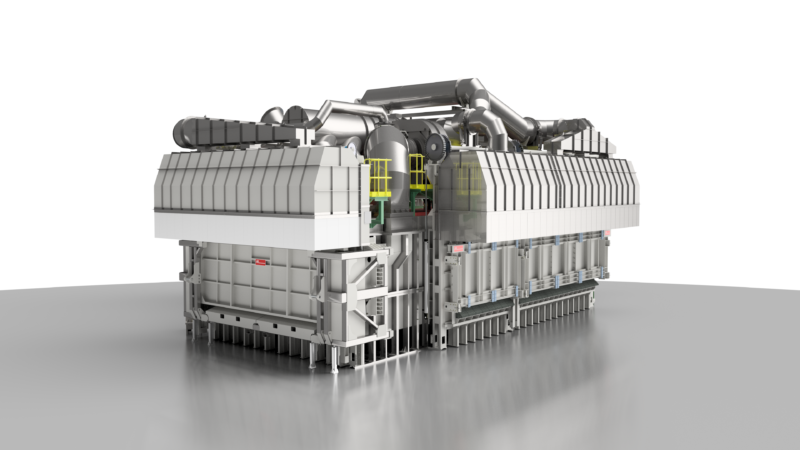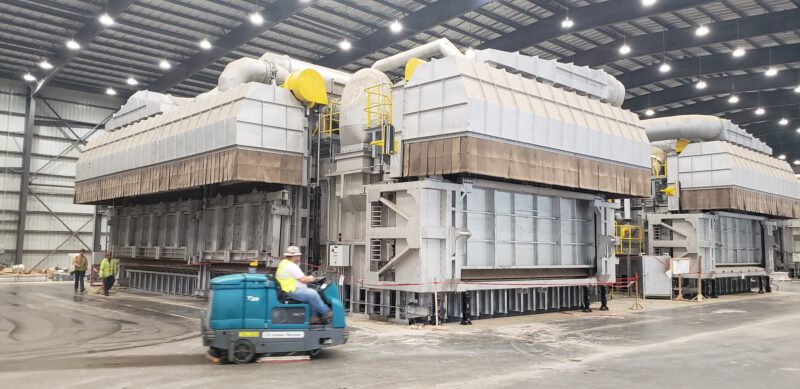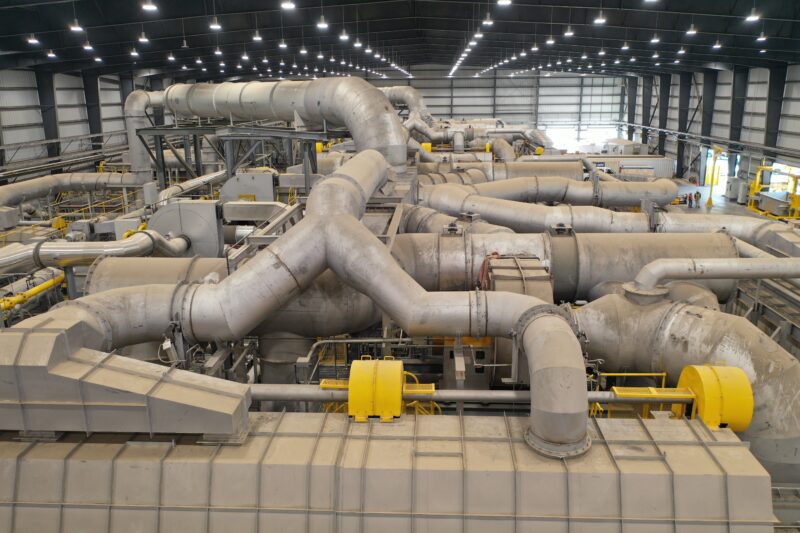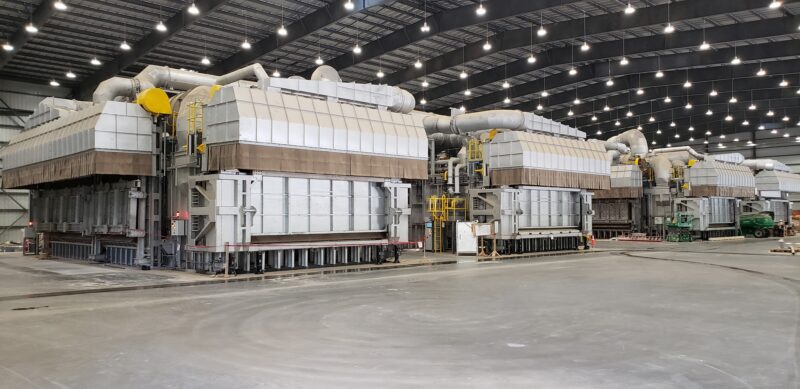Mechatherm’s innovative new furnace concept can be tailor-made to suit a wide variety of scrap types and operational requirements whilst delivering industry leading environmental and process improvements.
Molten metal circulation between chambers is performed via an Electro Magnetic Stirrer (EMS), Mechanical centrifugal pump or an electromagnetic pump (EMP) system.
The furnace typically consists of a hot chamber for melting and a contaminated scrap chamber for scrap pyrolysis and charging into the molten bath for indirect melting via submergence and circulation.
The contaminated scrap chamber comprises a dry hearth section for the lading of the scrap to allow for pyrolysis of volatile organic content (VOC). From there a hot gas fume recirculation fan extracts the fumes from that chamber and passes them to the hot chamber to be incinerated by the furnaces main melting burners.
The system is designed to destroy and oxidise any VOC's and utilise the available energy back in to the furnace thus increasing its overall efficiency.
The furnace is designed for low fuel consumption and high metal recovery. Scrap charging is normally performed via a dedicated charge machine with an integrated fume collection hood. During charging this hood seals with the furnace hood to eliminate fugitive emissions entering the work shop area during the charge.
Exhaust fumes resulting from the overall process are then collected and directed to a common exhaust and air pollution control system / fume treatment plant. Emission figures can then be guaranteed to meet current environmental legislations.
Typical scrap types usually include painted and anodised extrusion sections, thermal break, UBC, litho sheet, oily rolling mill scrap and fragmentised scrap.
This type of furnace is usually of static design, but tilting versions can be considered in some specific circumstances.
A third separate holding chamber can be incorporated for holding metal for certain casting operations.
The range also includes Side-well furnaces where scrap is charged directly onto an open or closed Side-well (non-fired), metal is then circulated via the melting chamber and the Side-well by mechanical centrifugal pump, EMS or EMP to achieve in-direct melting.








